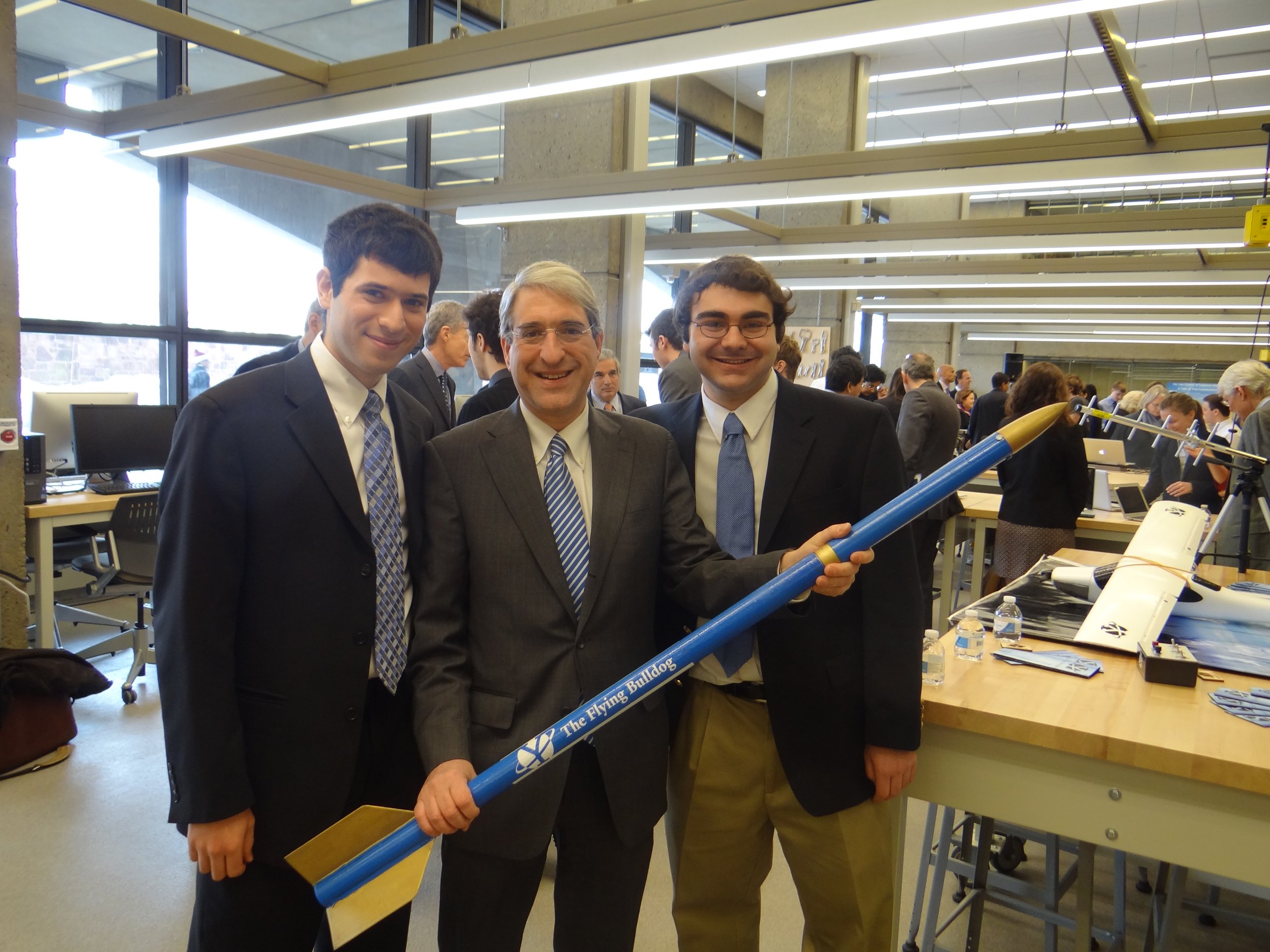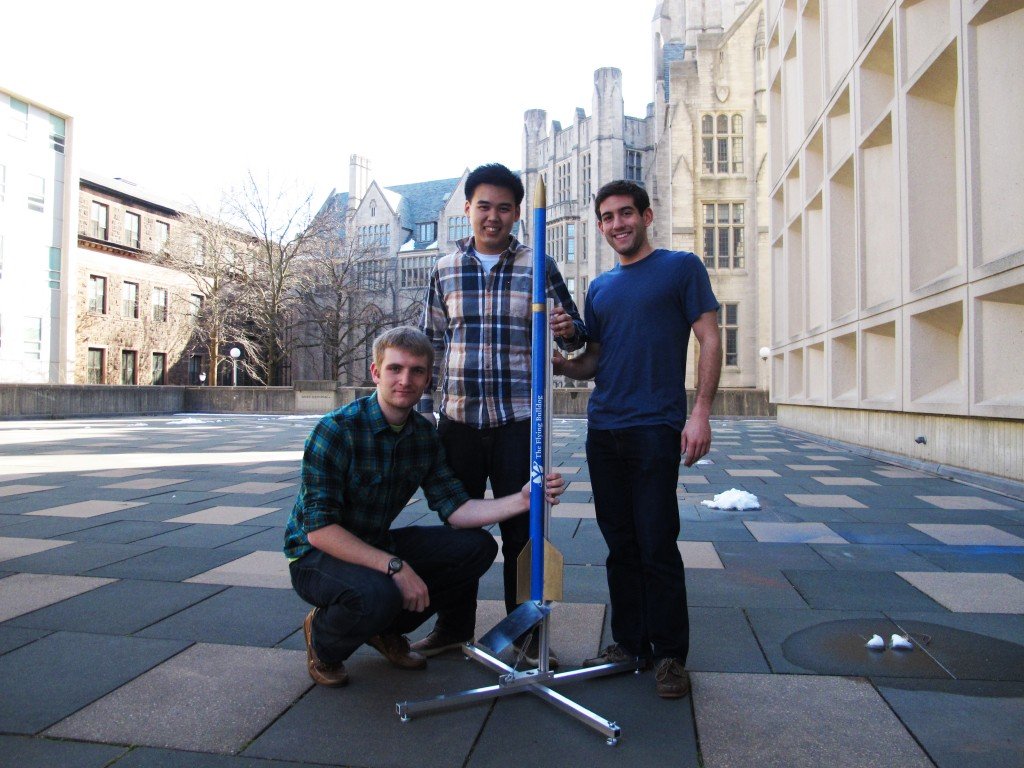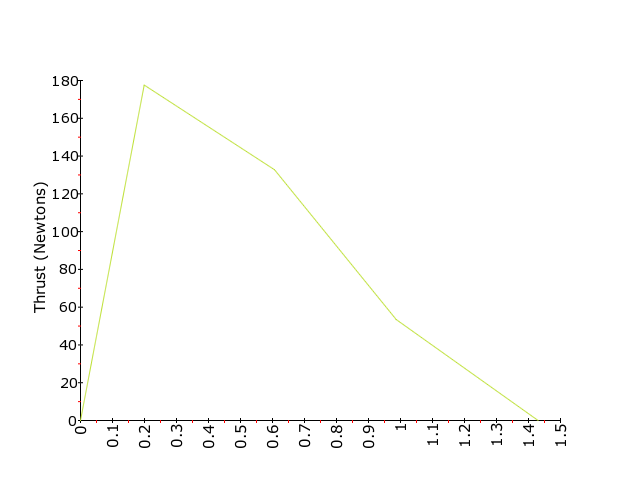Target Altitude
During the Spring of 2013, YUAA team members worked on a project to launch a rocket to an altitude of 1,700 ft. This project was in preparation for the Battle of the Rockets Competition in Culpeper, Virginia. Competition rules required that participants use a commercially available rocket motor, so our team chose to use the Contrail G100 hybrid rocket motor.
Hybrid rocket motors offer considerably more interesting engineering challenges than standard solid fuel rocket motors, leading to the selection of this specific motor. Unlike traditional rocket motors, hybrid motors separate fuel and oxidizer until combustion and are considerably safer than liquid counterparts. The Contrail G100 is a 38mm motor that uses PVC and nitrous oxide as fuel and oxidizer.
Team members designed several novel features to solve problems presented during the course of the semester:
Hybrid rocket plumbing system
Hybrid rocket launch equipment
Mobile rocket launch pad
Static test stand for rocket motor
Design and construction of rocket body
Avionics for rocket
Team members were required to use advanced avionics to track rocket performance during the flight. Our team made use of the PerfectFlite StratoLogger Altimeter, which used barometric pressure differences to calculate the altitude of the rocket. Team members designed methods to test and calibrate this altimeter in innovative pressure chambers.
Team members completed the rocket several weeks prior to competition, and were able to travel to Culpeper with other YUAA team members to compete at the Battle of the Rockets. Unfortunately, the Contrail G100 motor failed to perform as hoped and the rocket was not able to reach its intended altitude of 1,700 ft, reaching a maximum altitude of 617 ft.
This project has helped to serve as a strong basis for more advanced rocket technology, laying the foundation for the 2013-2014 YUAA project on hybrid rocket propulsion research.



